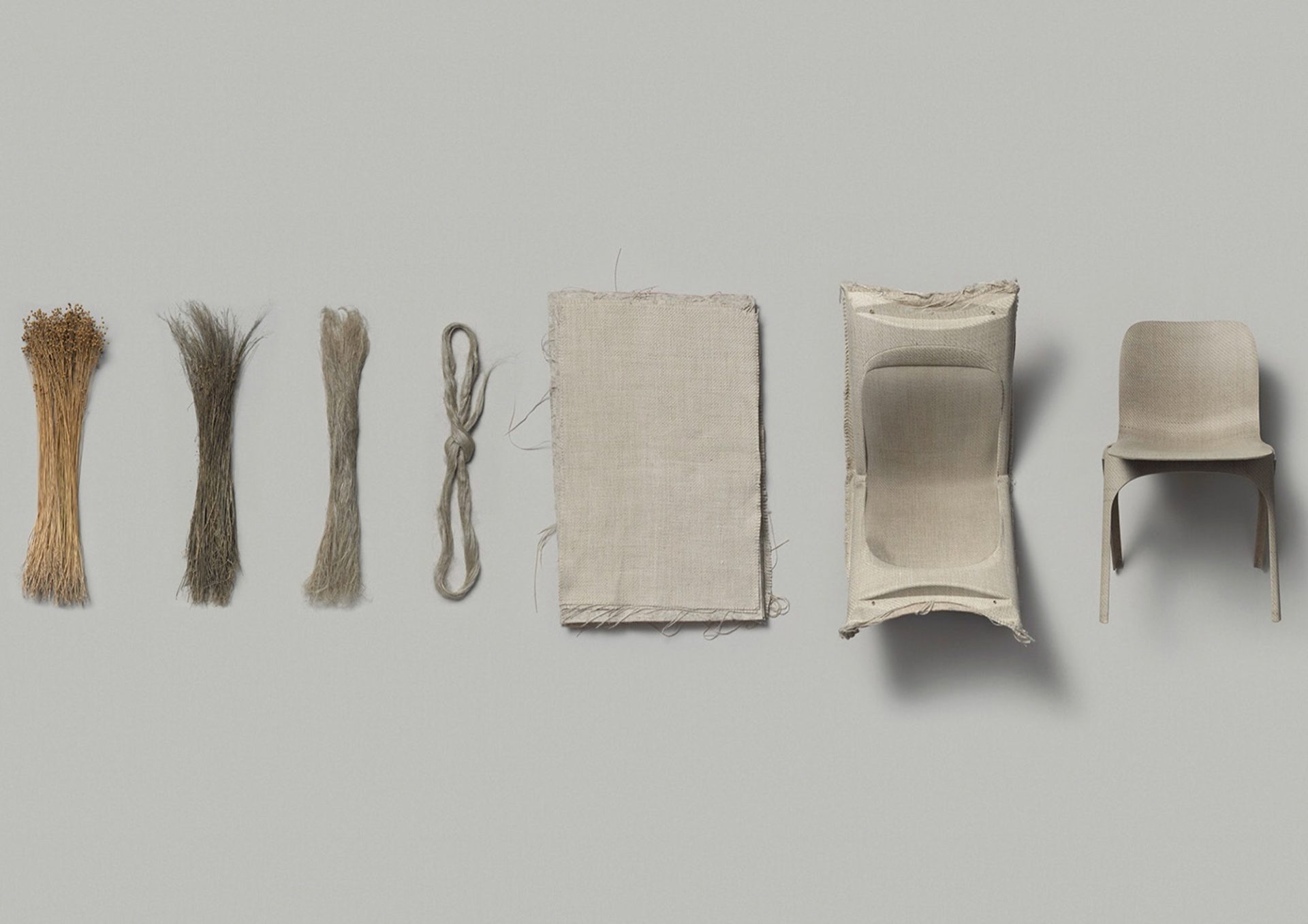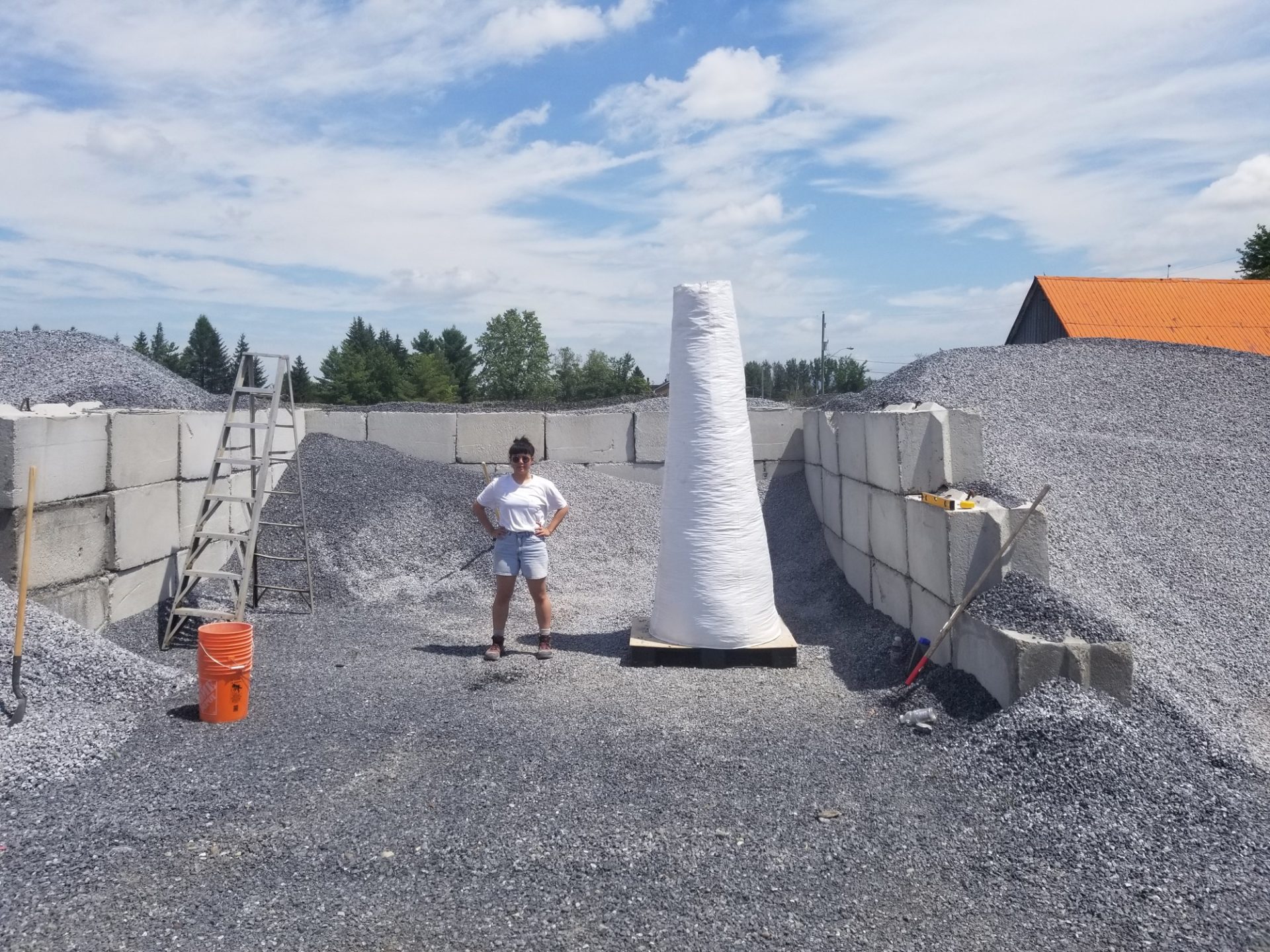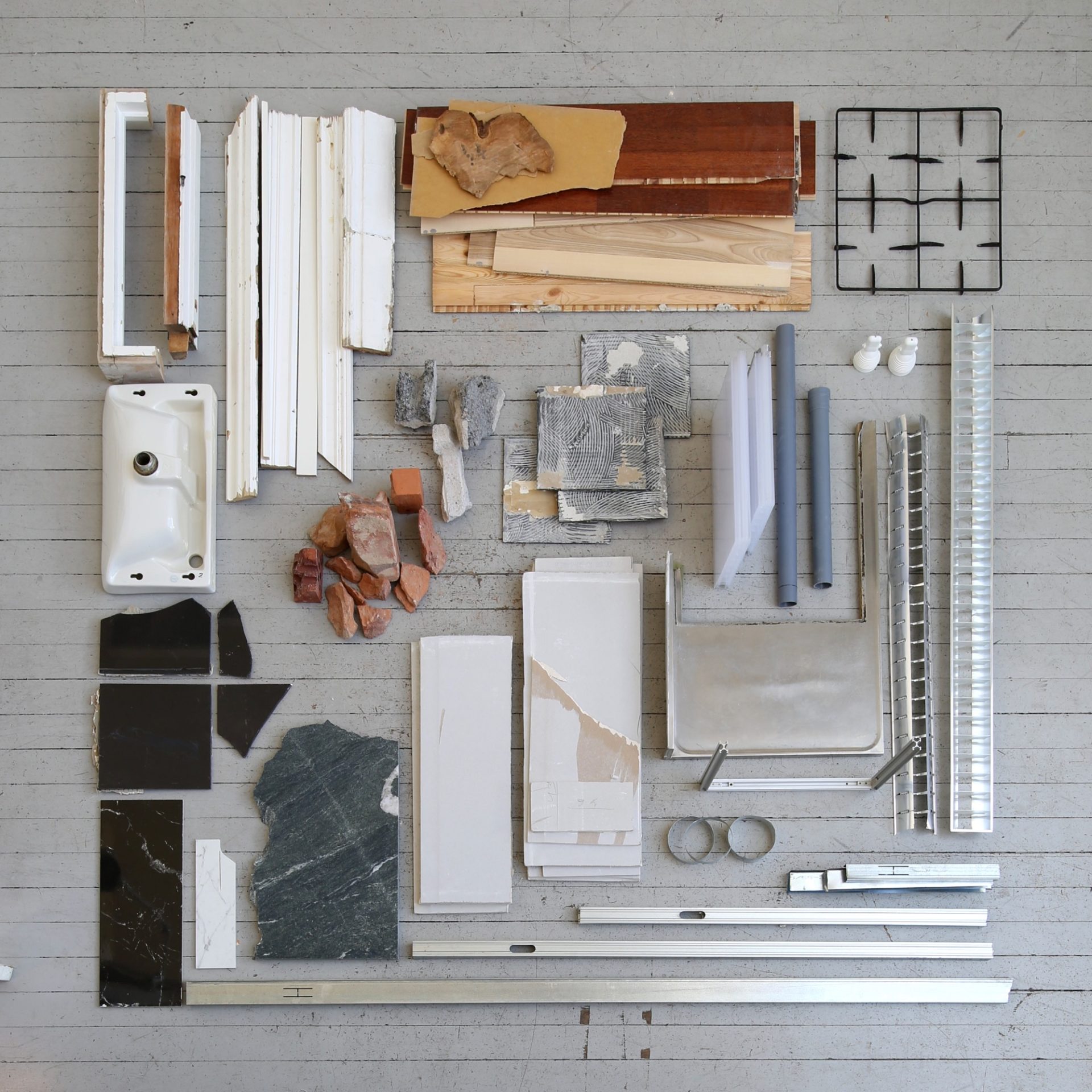The architecture profession tends to assume that there is always more to build. We need more infrastructure, more houses and more office space to accommodate economies and societies that are forever expanding. Greedy though it may be, this mindset is supported by the pervasive belief that a society’s success is best measured not in terms of humane measures such as the capacity for care and play but in economic terms such as market expansion. The result for the built environment is constant reconfiguration and extension into new territory to a degree that our planet can barely sustain.
This growth obsession is a central premise of the Oslo Architecture Triennale 2019, Exploring how the endless pursuit of growth has caused planetary weariness and social division, the Triennale invites visitors to imagine what a society of Degrowth could be like and how architecture could serve it.
What’s wrong with current ideas about growth? How would we measure value in a society of Degrowth? In what ways would architects’ attitudes need to change? And what kind of architecture would this result in? These were just some of the questions we had in mind when we spoke to curators Maria Smith and Phineas Harper.
Mark Minkjan: You probably need to do quite a bit of explaining when you talk to people in architecture about the concept of Degrowth?
Phineas Harper: A year and a half ago, you’d maybe spend five minutes trying to get someone into the zone before you could really get into a proper conversation about it. But increasingly we’re finding that that’s not the case anymore. That you say to someone it’s about architecture and Degrowth, and they’re like “ah, yeah. Of course.”
MM: Reading your curatorial statement, it seems that you’re acknowledging a worldview of abundance instead of one of scarcity that we usually have to play by. And it seems the world that you are trying to draw up is a world that’s different from the usual competition and extraction, is that how I can read it?
Maria Smith: Degrowth is about is stopping incentivizing extraction. At the moment we’re in a pursuit of economic growth at all costs because we need it in order to manage our private and public debt because that’s the way our current economic system is set up. And because we have to do that, that means that the system encourages consumption, resource extraction and other things that are stupid and environmentally and socially damaging.
The idea of Degrowth is to create a system that allows many of the more socially and environmentally conscientious projects, that already exist all around us. It’s not like a different and crazy world. It’s just that they struggle to be commercially viable under our current economic system, but if we could free ourselves from this incessant, necessary growth then a lot of those really culturally rich projects could flourish.
MM: How would you define value or progress in a world of Degrowth?
PH: There’s loads of things that are valuable, right? Like caring for a child is valuable. A tree near where you live is valuable. Community, culture and art are valuable. Architecture is valuable in the sense that it can change you, it can put you in touch with a sense of your civic life. But none of those things are being measured when you’re measuring GDP. All you’re doing when you’re measuring GDP is trading. GDP is not necessarily a bad thing to measure, but the problem is that it’s the only thing measured.
Currently, we determine what is a happy and healthy society by whether its economy is growing or shrinking. There’s all sorts of things that are good for GDP, but horrible for humans and horrible for the planet. Similarly, there are things that are bad for GDP that actually would be quite good for humans and good for the planet. If you stopped cutting down the Amazon rainforest, that wouldn’t be so good for GDP because it would mean less cattle farming and less logging. But it would be brilliant for the planet.
Degrowth is everywhere all the time, it always has been. We all care for each other without trading. Every time I lend my neighbour something or organize a community barbecue – that’s Degrowth thinking right there. Often the richest things we all do in our lives are nothing to do with growth. Unless you’re trying for a kid, sex is a massive waste of time, economically. We’re all quite good at Degrowth innately. It’s the systems that we have created around us that are problematic.
MM: I studied economics a decade ago, and I think it’s maybe more of a collective delusion than a science. But there’s still a little economist inside me somewhere, and it’s trying to understand how Degrowth does not equal recession. Maybe you could say a little bit about that?
MS: Degrowth isn’t about failing to continue to grow. Degrowth is about intentionally not demanding that growth. So it’s a very different perspective. The idea with Degrowth is that this is done on purpose, it is done with a redistribution of the assets, this is done so that everybody has enough. It’s done by design, not by collapse.
MM: To what extent is Degrowth a concept or a term that could work as a replacement for sustainability?
MS: Sustainable, environmental design forms part of this conversation, of course. And it’s something that’s very familiar to architects. We’ve been especially worried about operational energy and operational carbon for a long time.
The reasoning behind Degrowth is that we cannot continue to extract resources and use energy at this current rate, at this increasing rate, year on year on year, on a finite planet. However, the reasoning behind Degrowth is not only environmental, it’s also social. It’s recognizing that environmental and social justice, injustice, are two sides of the same coin. It’s not like oh, we need to somehow compromise social concerns in order to achieve environmental ambitions, or vice versa. The growth paradigm will have us believe that we need to get richer and richer and then somehow we’ll be able to address sustainability issues. Degrowth, as a movement, is debunking that and recognizing that resource and energy use track along with GDP very closely. The more that we continue to insist on growing the economy, the more we’re promoting these environmentally-damaging and socially-damaging behaviours. So in order to solve both those problems, we need to solve them together.
PH: The Brundtland Report, led by Norway’s former prime minister, was the first major international government document that talked about sustainable development. It’s the genesis of a lot of what we now think of as sustainability. But it was always framed then as a growth project. “We’re going to grow the economy, but we’re going to do it in a sustainable way.” What’s become clear is actually that’s a bit of a contradiction, that you can’t sustainably grow the economy forever dealing with finite resources. So whether we need to redefine our idea of sustainability or whether we need to replace it with a different word, I’m not really sure. But what I do know is that the contemporary understanding of sustainability is actually not sustainable, and it does need some root and branch rethinking.
MS: One of the big arguments against Degrowth is “green growth”. It’s this idea that we can continue to grow the economy, but we can do that through big investments in green energy plans, and we’ll get tons of jobs, and this is like a big business opportunity. But there are good studies showing that that’s just not possible because as soon as you measure the externalities of any of those moves, you’re just ending up in the same place. But obviously those kinds of ideas, sustainable development or green growth are really politically attractive because it means that we don’t have to deal with the central problem.
MM: Let’s move to architecture. What habits of the architecture profession are the first that we need to get rid of to serve a society Degrowth?
MS: We need to shift our design culture to place environmental and social concerns at the top of the list of priorities. They’re in there, to an extent. But they’re also having to fight for pole position with certain design ethics. Things like the truth to materials, the idea that if you are exposing your massive concrete slab then that is somehow an ethical and honest and noble thing to do. But that’s clearly nonsense if you look at the environmental impact. We have to let go of things like that.
It’s also about maintenance. You don’t need to build something out of all of the nasty chemicals that you can find to make it completely robust, last forever, never need maintaining. All of the embodied energy in that endeavour is used up in the first couple of years of that building. Never having to do any work maintaining it has a huge cost to it in terms of the environment. Maybe we could have a different attitude to ongoing maintenance projects, ongoing care. Not just as something that’s a necessary evil, but actually something that could be like a good social ritual. A festive act that could make much, much kinder buildings. Shifts like these would make designing quite a different activity.
MM: What could be the role of a Degrowth architect?
MS: I like to think of architects as spatial therapists who are just reconfiguring things. We’re just moving stuff around according to the needs of the clients, the communities, the environment, the context that we’re serving. It’s not about us coming up with some genius idea and then finding the resources to realize it. It’s about negotiating and configuring the existing resources in order to therapeutically benefit the entire context that we’re working with.
MM: What’s the worst architectural project that you’ve seen recently in terms of Degrowth?
MS: Look, there’s lots of horrible things out there, but it’s quite important not to vilify our colleagues. If the only people that were allowed to do anything good are people who have never done anything bad, then that massively reduces the human resources that we’re able to put towards doing something good. We’ve all specified concrete in the past. We’ve all been a bit lazy and not doing the recycling, or we’ve put up buildings that have huge amounts of steel in them. I’m sidestepping your question because I think we need everyone. I think there should be some sort of amnesty.
MM: What comes to mind when I try to connect architecture to Degrowth are things like salvage building materials or material passports..
PH: Yep, there’s a whole load of that stuff in the Triennale. Of people who are trying to just build better. Either by reexamining older ways of building from earth or thatch or by doing ingenious new things like making structures from aggregates but without cement. Much of it is about material science and this idea that architects actually just need to get better at understanding the materials that we’re specifying and what they do.
But in a way, all of that stuff is just to make a much better version of growth-based capitalism that would buy us a bit more time on the planet, but without the other components it’s only going to get us so far. If you replace all concrete with hemp-crete, that would be amazing. But if you still built speculative office towers, if you didn’t reform land ownership, if you didn’t do anything about the nuclear family house, it’s only going to be a sticking plaster over a bigger problem.
MM: Could you say something about the importance of culture, performance and ritual in the Triennale?
PH: There’s the exhibition part and there’s a whole other significant part, which is in partnership with the National Theatre and other theatres in Oslo. That’s partly because we think that theatre is a really good curatorial tool to help people feel their way into a topic rather than just processing it with their brain. But it’s also because Degrowth is inherently a movement that is about nourishing culture and about prioritizing the production of art, the writing of love letters, amateur gardening and taking the scenic route over activities that are economically productive, but ultimately damage the planet and damage ourselves.
MS: Even a lot of arts and culture has been commodified and co-opted into the creative industries, cultural industries, tourism, and all of these things. Because they’re being used to further this growth project rather than being used for themselves, and that degrades them in lots of ways.
PH: I don’t know how it is in other countries but in the U.K., the Arts Council – which is the main government funder of the arts – has started referring to itself as an investor, and it talks about the grants that it gives as investments. While this is a small language change, it speaks volumes of the fact that we no longer have any idea what art is for other than as an economic project. The Arts Council sees itself as a bank that is hoping to get returns through tax for the art that it invests in. The term creative economy has become so insidious now that even local community choirs are somehow weighed up for the value that they add to house prices in the area.
One of the most exciting and the most seductive things about Degrowth is its critique of the way that culture is falling apart under growth, and this heroic possibility to reclaim the value of culture from GDP is one of the things that I find most enticing about it.
MM: What about architecture education? What skills should be more central in the curriculum?
MS: I actually think that what architecture schools can offer to Degrowth is the project-based work that we do; we are propositional and we do research in all sorts of different areas in order to bring together a thesis and then make a proposal on the basis of that research. That’s something very valuable about architecture education and should be cared for and could in many ways probably be rolled out more to other disciplines.
PH: I know that people like to slag off architectural education, it’s always a good topic to get people angry in the pub. But I think there are a lot of things that are very precious about the way we do education in architecture. You’re often in a studio, surrounded by stuff you’ve made and peers who are making other things. You visit buildings and sites and you go on trips. You have frequent contact with tutors and other kinds of experts compared to just sitting at the back of a lecture theatre and reading books. You’ve usually got a workshop or some sort of hands-on making space in schools. I think all these things are really great, and actually quite vulnerable in a neo-liberal situation where education’s under a lot of pressure, and we ought to cheer on architecture education.
I wish that economics education was anywhere near as rich as architectural education. We would get a very different kind of economist if they were more situated, were asked to be more propositional, were asked to respond to the world in the way that architects are. There are, obviously, problems with architectural education. I don’t want to be overly rosy about it, but I do think that it’s precious.
MS: I do think we’re not doing enough engineering, we’re not understanding enough about the quantitative side of things. And that allows us to get away with saying “Yes, but my concrete wall is exposed.” But we need to be more hard-nosed about the engineering elements, like “Yes, but do you know how many megajoules of energy it has taken to produce that.”
MM: How do you think an architecture of Degrowth can be systemic rather than a handful of well-meaning and valuable projects that are small scale and often temporary?
MS: Architecture of Degrowth couldn’t be systemic without wider systemic changes as well. However, that is not to say that architects or those involved in architecture shouldn’t be doing everything they can in order to bring about those systemic changes. Part of the Triennale is exhibiting projects that are of the sort that we could see much more of if the systemic changes to escape our growth dependencies happened. So that we could see many more housing schemes that allowed for different kinds of sharing, different kinds of intergenerational groups living together, different niches. Part of this is about creating those precedents to illustrate that it’s worth making this shift by design. Not just running off towards the end of the cliff until we’ve used every single last piece of oil in the ground – and then suddenly our economy tanks because the system isn’t set up, and then we’re all in a catastrophic position.
PH: I completely agree. Architecture is both the armature on which culture sits, but it’s also an expression of culture so it has to go in tandem. But we are seeing things like New Zealand recently announced that they’re not going to have GDP as their main metric of social health anymore. Which is maybe a baby step, but it’s a pretty significant baby step.

For the designers of buildings, degrowth requires abandoning the idea of a final, pristine work of architecture. As a bar of soap, ARCHITECTURE is a communal resource for Triennale visitors to clean themselves. Like a bar of soap, degrowth architecture lasts only a moment before it transforms under the use of many hands.
Yujia Bian
MM: Some people, myself included sometimes, they argue that there’s an overgrowth of biennales, design weeks, architecture festivals, et cetera. What’s your perspective on that and how do you deal with it?
PH: There’s loads. I personally don’t think the problem is that there’s loads, I think the problem is a lot of them are quite dry..
MS: International trade shows.
PH: Quite commercial, quite irrelevant to their local context sometimes. I’m not going to name names exactly, but they’re clearly biennials and triennials that have been set up in order to promote something. And then there are a lot that I think are vehicles through which academics speak to each other under the hospices of having a public festival, but in fact, it’s an academic conference with an exhibition attached to it. There’s nothing wrong with that either, but the fact that it’s masquerading as a much more publicly-spirited thing is quite confusing, and it makes architecture seem quite alien and hostile and overly-intellectualized.
We do need to be critical about what these things are actually for, who they’re trying to engage with, and to be a little bit more honest about some of the agendas that are at play in this weird micro-industry that has sprung up. Because it’s fucking hard work.
MM: So what agendas are at play at OAT?
MS: Of course, and there are so many partners and stakeholders involved. There are conflicts there, and because something like this is, in some ways, seen as marketing, there’s very little money because the idea is that well everybody is putting in their effort because it benefits them commercially. So we’re one of many examples of good and interesting cultural projects are parasitic on the growth project. And there’s not really any choice because so long as we are within this system then the only way we can do these things is to say “okay”. But we’re only made from by-products of the wider industry.
We are being audited by one of our contributors in terms of materials and resource uses and things like that. It’s really interesting because they wrote to us and said “Would you like to put us in the Triennale?” And “We’re going to do this whether or not you put us in.” So it’s happening, you can embrace this or not.
There are certainly going to be problems with it, of course, there will be hypocrisies. I think it’s important to not be too terrified of that.
PH: You can find clever ways to address the hypocrisies here and there. So we’re going to travel by train to get there. And instead of producing tote bags, which seems to be what everybody does for a Triennale, we’ve just asked for dead stock from cultural institutions around Norway and around the world, and those will be our tote bags.
MM: I believe you’re also reusing exhibition materials from the previous exhibition in the main location of OAT 2019?
PH: That’s correct. It was a show about landscape architecture. We’ve actually been talking to them since before they built that exhibition to try and get together and to understand that we were going to dismantle their exhibition and make our exhibition out of it.
MM: So you had to create an inventory of everything that they were using and then think of ways to reuse it?
PH: Yes At the other end, everything that we then use goes into this repository of materials that anybody who’s putting on an exhibition in Oslo can take bits from for their own shows.
MS: We’re just borrowing it. The plywood will live on!
MM: We haven’t really talked about projects in the exhibition yet.
PH: I’ve talked about how there are examples of Degrowth everywhere, and that’s true. But it’s not like there’s a Degrowth house that we could build next door tomorrow because Degrowth is such a broad political and social shift.
MS: You can’t pin it on one example. In the library, which is the main repository for information, there are over 80 contributors, and they’re all coming at this from a different way, and they’re all part of the overall landscape to give an impression of what architecture would be like in a Degrowth economy. But you need to have that multiplicitous experience: it has to have context, and it has to be both pro and critical. So there’s not one key project. It’s not a style. It doesn’t work like that.
MM: I agree that talking about a handful of projects could be too limiting.
PH: Although, obviously it makes journalists very happy.
MM: Without focusing on specific projects then, could you say something about the library?
MS: We’ve chosen a library is because it’s a way of presenting lots and lots of information, which we want to do, but also because a library is an institution of sharing, and sharing is really key to a Degrowth economy where we use fewer resources and also up our social and festive experiences.
MM: And you’re making a book of fiction.
PH: Yes, instead of a catalogue of essays, we’re making a book of short stories. We’ve commissioned architects, sci-fi writers, and graphic novelists. There may be 16, 17 original short stories in this book. And just in terms of architectural culture, I think that’s a really provocative move. It challenges the conventional format of the Biennale catalogue or the exhibition catalogue. It tries to open it up to a broader audience who might not be very good at reading essays but might love to read some fiction, especially if it’s a comic book.
And it hopefully will help people to imagine Degrowth worlds, without having to know all the steps are to get there. You can take a jump into the future and see how it feels for a bit, and then come back to the present and figure out how you are going to get to the future that you want.
The Oslo Architecture Triennale 2019 can be visited until November 24. OAT 2019 is curated by Interrobang Architecture and Engineering. The Chief Curators are Matthew Dalziel, Phineas Harper, Cecilie Sachs-Olsen and Maria Smith.




